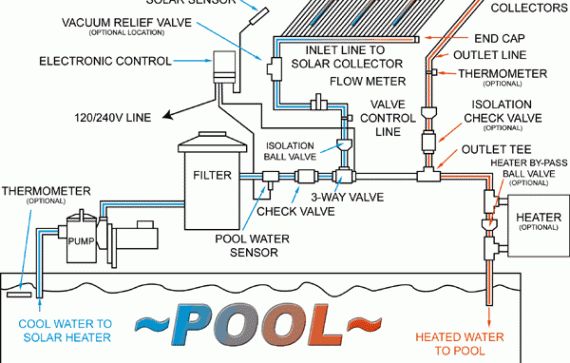Where Should A Pool Check Valve Be Installed

Where should a pool check valve be installed
On booster pump applications, a check valve can be placed on the suction or discharge of a centrifugal pump. If an additional check valve is required, it should be placed after the pressure tank to allow the pump and discharge pipe to remain pressurized.
Where should a check valve be installed?
Check valve can be installed in horizontal or vertical piping runs, with the flow running upward. Mounting for vertical installations is critical.
How far should a check valve be from a pump?
In submersible pump applications, the first check valve should be installed directly on the discharge head of the pump or maximum one pipe length (20 feet) above pump.
Where does the check valve go in pool plumbing?
The best place to install a check valve is as close to the pump as possible. This will ensure that water can only flow in one direction – from the pool to the pump – and not back into the pool.
What is the primary concern when installing a check valve?
Mistakes in installation can manifest in valve leakage or failure, compromising the integrity of the entire piping system. Swing check valves, double-door check valve, or silent spring-assisted axial flow check valves, all control flow through a slightly different mechanism.
Should check valves be installed vertically or horizontally?
Not all styles of check valves function properly or are suitable for vertical flow directions. When installing a check valve, a horizontal line is always preferred, because it takes gravity out of the equation.
Is it necessary to install a check valve?
Check valves are necessary if there is a risk of condensate backflow. For example, when a trap discharges into a common condensate collection line, there is the potential risk of backflow from condensate discharged from other traps, so as a rule a check valve should be installed.
When should you use a check valve?
A check valve will be used commonly on the discharge of the pump to prevent backflow from the downstream system, when the pump shuts off. Check valves are also used to prevent contaminated media in branches from flowing back into the main trunk line.
How many check valves do I need?
More than one check valve should always be used in submersible pump installations. If the pump does not have a built-in check valve, a line check valve should be installed in the discharge pipe within 25 feet of the pump and below the drawdown level of the water in the well.
Does a well pump need a check valve?
Check valves are an essential component of well pump plumbing systems. They stop water from flowing back into the well when the pump turns off, protecting the system from various problems. Whether a well's plumbing system needs one or multiple check valves depends mainly on the depth of the well.
How do you size a check valve?
In order to properly size a check valve, you must determine the minimum velocity required to fully lift the disc. Then find the mean velocity of flow in the piping system and ensure it is greater than or equal to the minimum required velocity.
Does my pool need a backflow preventer?
Plumbing code requires annual testing of the PVB by a certified backflow inspector. Underground swimming pools also require a testable backflow preventer (PVB).
How long do pool check valves last?
Pool valves tend to last between 5-7 years before the exterior plastic parts need to be replaced. As long as the internal parts are working handles can be replaced. If the valves are older than 10 years you may want to replace the whole thing versus replacing just handles.
Do I need a check valve on my pool heat pump?
Without a check valve to stop backward flow, the water in the piping would be suck back down when the pump is shut off. The check valve should be installed in the pipe leading up to the solar panels.
Is a check valve the same as a backflow preventer?
Check valves use a hinged plug that allows water to pass through the pipeline but blocks it from coming back. Backflow preventers, on the other hand, apply an increased amount of pressure on a pipe to ensure the water can only flow one way.
How much does a check valve restrict flow?
They restrict the flow in one direction 100%. in the reverse direction (open) they will never get to 100& flow as it takes a small amount of effort to shift the valve from the blocked direction to the flow direction.
Can a ball check valve be installed horizontally?
The principle of the ball check valve is very simple. The ball has sufficient weight to seat tightly even in high viscous liquid, but to open freely so that the headloss is minimal. Flomatic ball check valves can be installed horizontally or vertically provided that they are installed as the illustration shows.
Can a check valve be installed upside down?
Check valves MUST be installed with the valve's FLOW arrow pointing in the direction of the flow. In horizontal installations, the designated side must be positioned “up”. Do Not install Check Valve upside down.
Can a swing check valve be installed in any position?
Swing check valves can be mounted in either vertical or horizontal position with upward flow or in any intermediate position. Flow must be by direction of arrow in body.
Can you use spring check valve horizontally?
Lift Spring Check Valves They can be used in horizontal or vertical lines and are recommended for use with steam, air, gas, water, and vapor lines. Flow enters below the seat of the valve and lifts the disc or ball off the seat.










Post a Comment for "Where Should A Pool Check Valve Be Installed"